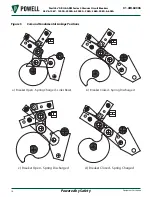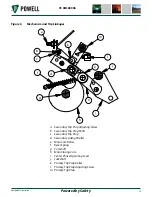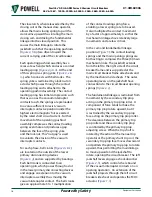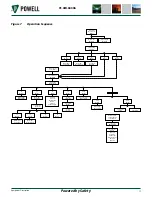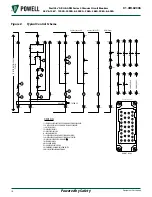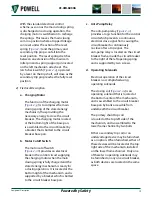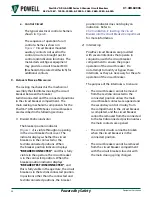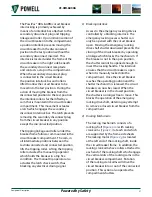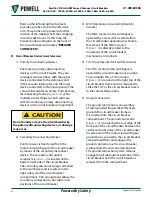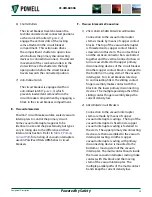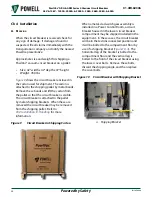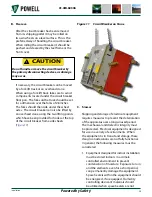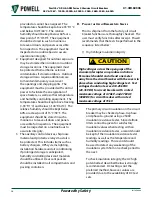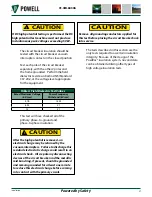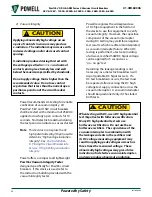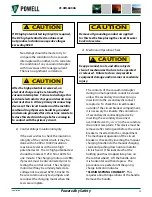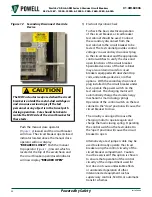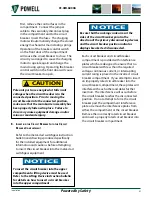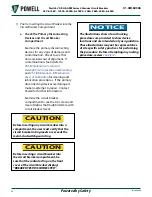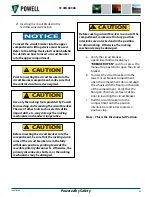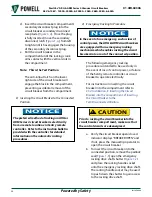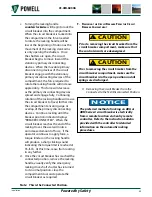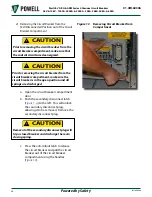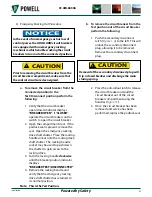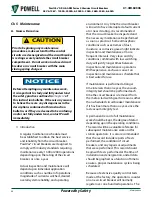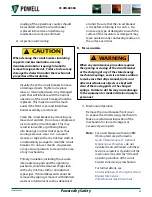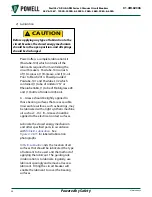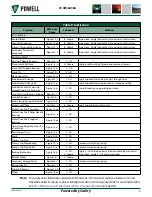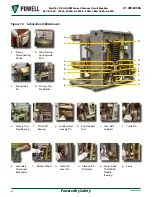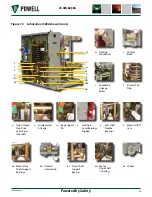
Powered by Safety
®
28
Installation
PowlVac® ARG & ARM Series 4 Vacuum Circuit Breakers
5kV & 15kV - 1200A, 2000A, & 3000A - 25kA, 36kA, 50kA, & 63kA
01.4IB.60306
2) Vacuum Integrity
Applying abnormally high voltage across
a pair of contacts in vacuum may produce
x-radiation. The radiation may increase with
increased voltage and/or decreased contact
spacing.
X-radiation produced during this test with
the voltage specified in
and normal
contact spacing is extremely low and well
below the maximum permitted by standards.
Do not apply voltage that is higher than the
recommended value. Do not use contact
separation that is less than the normal open
position separation of the circuit breaker
contacts.
!
CAUTION
Powell recommends AC testing for reliable
verification of vacuum integrity. All
PowlVac® 5kV and 15kV circuit breakers
shall be tested with a minimum of 25kVAC
applied across fully open contacts for 10
seconds. No dielectric breakdown during
the test period constitutes a successful test.
Note
: This test does not replace the AC
high potential testing (Hipot) used to
determine “High voltage insulation
integrity.” See
D. Placing the Circuit Breaker into
Service, 1) High Voltage Insulation
.
Powell offers a compact and lightweight
PowlVac Vacuum Integrity Tester
designed specifically for PowlVac circuit
breakers. If this device is used, refer to
the instruction bulletin provided with the
vacuum integrity tester.
Powell recognizes the widespread use
of DC hipot equipment in the field and
the desire to use this equipment to verify
vacuum integrity. However, the capacitive
component of the vacuum interrupter
during DC testing may yield false negative
test results, which are often misinterpreted
as vacuum interrupter failure. When DC
testing is performed, a test set providing
a full wave rectified 50kVDC hipot voltage
can be applied for 5 seconds as a
“go - no go” test.
Recording the leakage readings is not
necessary, as a dielectric breakdown will
trip all portable DC hipot test sets. If a
DC test breakdown occurs, the test must
be repeated after reversing the DC high
voltage test supply connection across the
vacuum interrupter. A vacuum interrupter
should be questioned only if it has failed
both tests.
When testing with DC, use a DC high potential
test (hipot) set with full wave rectification.
Many DC high potential test sets use
half-wave rectification. Do not use these
half-wave rectifiers. The capacitance of the
vacuum interrupter in combination with
the leakage currents in the rectifiers and
its DC voltage measuring equipment may
result in applying peak voltages as much as
three times the measured voltage. These
abnormally high voltages may give a false
indication of a defective vacuum interrupter,
and may produce abnormal x-radiation.
!
CAUTION

